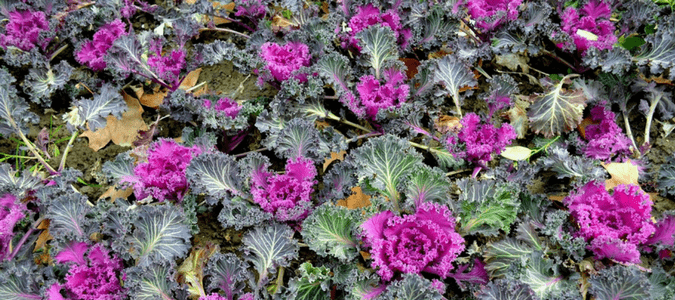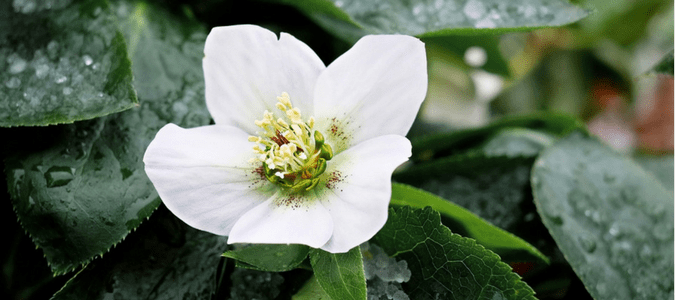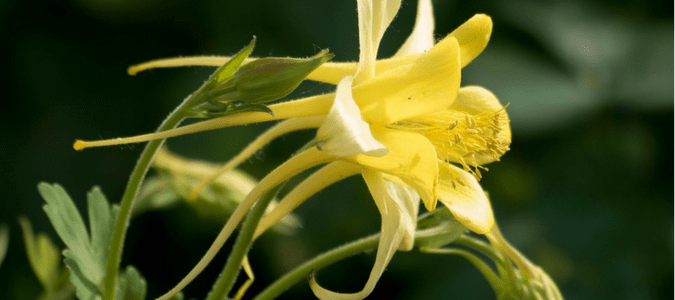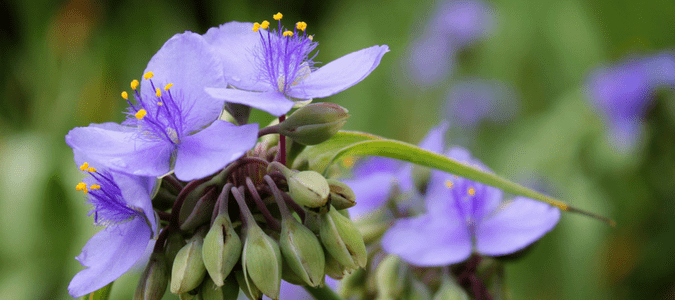
Anyone from Texas can tell you that we have unique weather patterns. You can experience all four seasons in just one day in a few other places. The running joke “If you don’t like the weather, just wait a minute” rings true to many of us. While it can be nice to experience summer weather on a December day here in Texas, winter flowers can challenge even the most experienced gardeners.
While keeping soil type and watering requirements in mind, remember that, on average, Houston gets 18 days each year with temperatures below freezing. Our growing season lasts an average of 300 days, which can be great for growing various plants and flowers. Remember that our days are shorter throughout the winter, so you’ll want to keep that in mind if you choose flowers that require a certain number of hours in the sun.
If you struggle about what to plant during the winter because you worry a hard freeze will lead to dead plants and wasted money, or if you dread having a dreary garden, you aren’t alone. Read on to find out how to spruce up your garden through the winter or even add a rainbow of color to brighten your spaces. Below is a list of winter flowers, plants that grow in winter in our climate, winter flowering perennials, and Texas native flowers. Ready to dig in, literally?
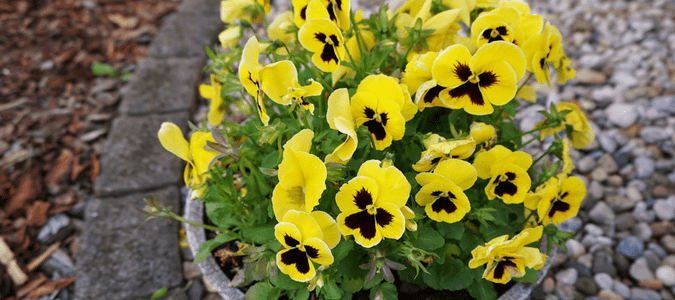
List of Winter Flowers
When the winter months hit, our grass turns yellow and some trees lose their leaves. It’s natural to want pops of color in your yard to brighten things up. Thankfully, there are still pretty, colorful flowers you can use in your garden through the winter to bring a smile to your face.
You never really know what Texas weather will be like during the winter. Some years, we can end up with a mild winter where it never freezes, and every few years, we experience a holiday season with a few days below freezing. If we end up with a severe winter, your yard can suffer during the winter months, although there are extra steps you can take to prevent frost damage to these winter flowers, such as watering your plants early in the morning. If you know severe weather is coming, you can cover your plants to help them retain some heat. Keep the tarps off the plants to prevent them from being crushed using stakes. If you are really concerned about winter weather, you can also put your more delicate flowers in containers so you can bring them inside on those few nights when a freeze is predicted.
Here are some flowers you can consider adding to your yard during our unpredictable Texas winters:
Pansies
Pansies are a beautiful, low-growing annual in various colors to suit anyone’s tastes. You can pick your favorite, choose them all to give a more “wild” look or choose several and plant them in blocks to bring patches of color to your lawn. These plants need some sun to grow and are even edible, used by some to treat a variety of ailments.
Snapdragons
These winter flowers will also give you a wide variety of colors. With their stalks, snapdragons can also give your garden height (from 12 to 36 inches). These flowers also come in various colors, but not a true blue like pansies. Snapdragons need full sun to partial shade, but they stop blooming once it starts heating up.
English Marigolds
A staple in British cottage gardens, these yellow and orange flowers will also add a pop of sunshine to your landscape. They’ve been known to do well through the winter and withstand hot summers. Marigolds like full sun and can survive several nights when the temperature drops below freezing. These medicinal flowers can also be used to treat a variety of conditions, such as conjunctivitis, eczema, and sunburn.
Sweet Alyssum
These tiny flowers grow in little clusters, resembling flowering bushes. Sweet Alyssum comes in various colors, including white, which can be pretty in the winter. In our hardiness zones, these flowers can grow year-round. Sweet Alyssum grows in full sun or partial shade but may stop flowering in the heat. Alyssum also does well in a container but needs more care when it comes to watering and fertilizing.
Petunias
These vibrant flowers come in shades of violet, pink, white, and yellow. Petunias also have multi-colored varieties, making a great addition to your garden or as a container flower. You can also choose an extraordinary trailing petunia variety that can add exciting structure to your garden or fence. Petunias like full sun to partial shade but don’t do well in the extreme heat of summer.
Ornamental Kale and Cabbage
These pretty, edible plants cover a lot of space, giving you plenty of bang for your buck. With a purple or pink rose-like center surrounded by pretty green leaves, ornamental kale and cabbage need full sun and fertilizer.
Plants That Grow In Winter
You may be surprised to learn that several vegetables grow well in the winter, such as radicchio, lettuce, spinach, Swiss chard, cabbage, kale, and broccoli. In addition, a variety of shrubs do well when you plant them in our colder months, especially if we see a milder winter.
Radicchio
This cool-season vegetable delivers a red-and-white cabbage-like appearance and will add a pop of color to your garden and salad.
Swiss Chard
This broad green-leaf plant has wine-red stems that contrast beautifully with the green we tend to see in a garden. Swiss chard can taste slightly bitter but is mainly like beet greens or spinach.
Spinach
Spinach provides a pretty green texture to your garden and grows between six and eight inches tall.
Broccoli
While broccoli doesn’t have the color of other green vegetables, this vegetable is easy to grow and can usually withstand our Texas winters.
Wheeler’s Dwarf
Dwarf pittosporum doesn’t do well in full sun but does well through our mild winters. This small evergreen shrub is native to China and known for its fruity fragrance.
Rosemary
This fragrant bush does well year-round in Texas. Rosemary produces pretty lavender stalks and smells and tastes terrific. It’s lovely to have one of these plants in your yard when you forget to pick some up at the grocery store or need to add some extra flavor to your dishes.
Mexican Bush Sage
This perennial shrub makes a beautiful and hardy splash of purple color to your yard. Mexican bush sage prefers full sun and needs water but is drought tolerant. This shrub grows to four feet tall, adding a bit of height to your garden.
Winter Flowering Perennials
If you are trying to decide which flowers to add to your yard during the winter months, perennials are an excellent choice because they grow year after year.
Primrose
These flowers can be easy to grow in your garden or containers. Primroses really are annuals here and come in a variety of colors. English primrose does well here and is especially fitting for cottage and bungalow-style homes.
Dianthus
The Dianthus plant comes in several varieties; the perennial ones are Cheddar (d. gratianopolitanus), Cottage (D. plumarius), and Grass pinks (D. armeria). There are also annual and biennial varieties of this plant which come in a range of colors and grow between six and 18 inches tall. This perennial, which is most commonly pink, must have at least six hours of sun.
Aster
This butterfly-attracting flower resembles a daisy and does well in cooler temperatures but likes full to partial sun. Different varieties come in different colors; some grow as tall as six feet. The King George (Aster amellus) is a violet-blue, the Silver spray (Aster cordifolius) has pink-tinged white flowers, and the Nanus (Aster thomsonii) has lilac-blue flowers.
Mahonias
Some mahonia, such as the leatherleaf mahonia, produce tiny yellow blooms in the winter. After they bloom, mahonias have blue-grape-looking clusters.
Jacqueline Postill
The Daphne bholua blooms in mid-winter and is evergreen. These fragrant flowers produce delicate white-pink flowers with a yellow center.
Christmas Rose
The Helleborus niger comes in white, cream, pink, rose, burgundy and light green. This plant loves shade and moist soil.
Winter Jasmine
Producing delicate yellow blooms in January, this flowering vine makes retaining walls or fences pop, and the lovely scent can waft throughout your yard.
While all these flowers look beautiful in winter, you may be looking for flowers native to Texas since these plants tend to fare better over the long term and require less maintenance than other ornamental varieties.
Texas Native Flowers
You might be surprised to learn we have a wide variety of native flowers, a few of which can survive the colder weather. When you want to add native plants to your landscape, consider the following varieties:
Columbine
This colorful flower blooms in the spring, but some varieties have a pretty maroon color until then. The Texas version, Texas Gold Columbine, will grow up to two to three feet. Columbines grow through the winter and resemble a fern until spring when they bloom with bell-shaped flowers.
Coreopsis
This colorful wildflower has a variety of species that bloom throughout the state throughout the year.
Esperanza
Known as the trumpet flower because it resembles a yellow trumpet, this plant’s beautifully scented blooms will brighten up any garden. These flowers, which you might also see referred to as yellow bells, like full sun and can grow anywhere from four to eight feet.
Gregg’s Blue Mist Flower
Hardy to zero degrees, this perennial makes good groundcover and flowers in the spring and summer to attract butterflies.
Spiderwort
This beautiful bluish-purple flower works well as a hanging plant or ground cover. Some varieties come in white, pink, and purple. Spiderworts enjoy full sun.
Texas Betony
This flowering plant produces fire-red blooms and can be used as a groundcover or a decent size shrub that grows to between one to three feet. Hummingbirds and butterflies love Texas Betony, which can be planted in the sun or shade.
There are so many winter flowering plants and shrubs to choose from; you won’t have to worry about being stuck with a drab garden this winter.
ABC Can Brighten Your Yard All Year Long
Want to transform your yard during the winter months? The professionals at ABC Home & Commercial Services can help you plan and choose plants for your winter garden, clear out any dead or dying plant material get your yard ready for spring. Whether you are looking for heat-tolerant plants that do well during the fall months or even landscaping ideas, ABC can help.
